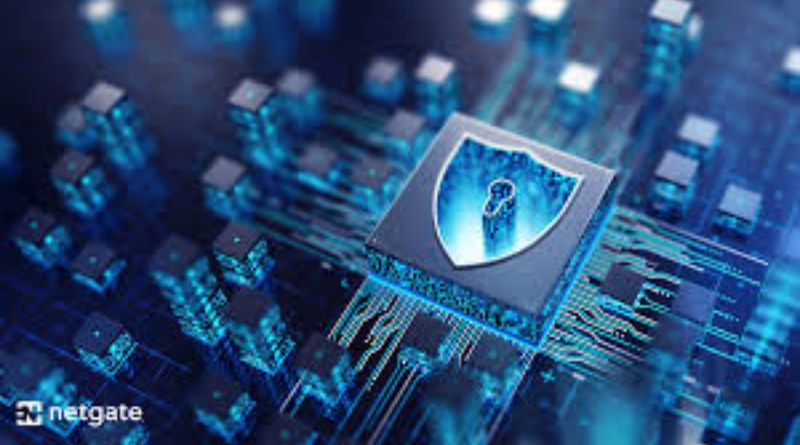In 2024, the cybersecurity landscape is undergoing a transformative shift driven by cutting-edge software solutions. As cyber threats grow more sophisticated and pervasive, the latest innovations in cybersecurity software are providing robust defenses and enhancing our ability to safeguard sensitive information. This article explores how the most exciting software of 2024 is revolutionizing cybersecurity measures, including advancements in threat detection, response strategies, and overall system resilience.
Table of Contents
The Evolving Cybersecurity Landscape
Cybersecurity has always been a dynamic field, but recent trends have intensified the need for advanced solutions. With the rise of complex attack vectors such as ransomware, phishing, and zero-day exploits, organizations must adopt more sophisticated technologies to protect their digital assets. In response, software developers have introduced a range of innovative tools designed to tackle these challenges head-on.
Key Innovations in Cybersecurity Software
1. AI-Driven Threat Detection
Artificial intelligence (AI) is at the forefront of cybersecurity advancements in 2024. AI-driven threat detection software leverages machine learning algorithms to identify and respond to potential threats more effectively than traditional methods.
- Behavioral Analysis: AI systems analyze user and system behavior to detect anomalies that may indicate a security breach. By understanding normal patterns of activity, these systems can identify deviations that might signify a cyberattack, even if the attack is subtle or new.
- Predictive Analytics: Predictive analytics uses historical data and AI algorithms to forecast potential threats and vulnerabilities. This proactive approach allows organizations to address weaknesses before they can be exploited by attackers.
- Automated Response: AI-driven tools can automatically respond to detected threats by isolating affected systems, blocking malicious activities, and alerting security teams. This rapid response reduces the window of opportunity for attackers and minimizes potential damage.
2. Zero Trust Architecture
Zero Trust Architecture (ZTA) represents a fundamental shift in how organizations approach security. Unlike traditional security models that rely on perimeter defenses, Zero Trust assumes that threats could be inside or outside the network and requires continuous verification of every access request.
- Micro-Segmentation: ZTA divides the network into smaller segments, each with its own security controls. This approach limits the potential impact of a breach by containing threats within isolated segments.
- Least Privilege Access: ZTA enforces the principle of least privilege, ensuring that users and systems only have access to the resources necessary for their roles. This minimizes the risk of unauthorized access and reduces the potential attack surface.
- Continuous Monitoring: Continuous monitoring is a core component of ZTA, involving real-time analysis of user activity, network traffic, and system behavior. This ongoing scrutiny helps detect and respond to threats promptly.
3. Advanced Endpoint Protection
Endpoints, including computers, mobile devices, and servers, are primary targets for cyberattacks. Advanced endpoint protection software provides comprehensive defenses against various types of threats.
- Next-Generation Antivirus (NGAV): NGAV solutions use advanced techniques such as machine learning and behavioral analysis to detect and block sophisticated malware. Unlike traditional antivirus programs, NGAV can identify threats that may not yet have known signatures.
- Endpoint Detection and Response (EDR): EDR solutions offer real-time monitoring and analysis of endpoint activities. They provide detailed visibility into potential threats, allowing security teams to investigate and respond to incidents more effectively.
- Threat Intelligence Integration: Integrating threat intelligence into endpoint protection software enhances its ability to detect and respond to emerging threats. By leveraging up-to-date information about known threats and attack patterns, these solutions can proactively defend against new and evolving cyber risks.
4. Cloud Security Solutions
As organizations increasingly migrate to cloud environments, securing cloud assets has become a critical concern. Cloud security software addresses the unique challenges of protecting data and applications in cloud environments.
- Cloud Access Security Brokers (CASBs): CASBs act as intermediaries between users and cloud services, providing visibility and control over cloud-based activities. They help enforce security policies, detect threats, and ensure compliance with regulations.
- Cloud Security Posture Management (CSPM): CSPM tools continuously monitor cloud configurations and deployments to identify vulnerabilities and misconfigurations. By addressing these issues, organizations can reduce the risk of data breaches and other security incidents.
- Data Encryption: Cloud security solutions often include advanced encryption techniques to protect data both at rest and in transit. Encryption ensures that sensitive information remains secure even if unauthorized access occurs.
5. Identity and Access Management (IAM)
IAM software manages user identities and access permissions, ensuring that only authorized individuals can access sensitive resources.
- Multi-Factor Authentication (MFA): MFA enhances security by requiring multiple forms of verification before granting access. This additional layer of protection reduces the risk of unauthorized access due to compromised credentials.
- Single Sign-On (SSO): SSO simplifies the user experience by allowing individuals to access multiple applications with a single set of credentials. It improves security by reducing the number of passwords users need to manage.
- Identity Governance: IAM solutions provide tools for managing and auditing user access permissions. They help organizations enforce access policies, track changes, and ensure compliance with regulatory requirements.
The Future of Cybersecurity Software
As cyber threats continue to evolve, cybersecurity software will need to adapt and advance. The future of cybersecurity is likely to involve greater integration of AI and machine learning, enhanced collaboration between security teams, and more sophisticated defenses against emerging threats.
- AI and Automation: The use of AI and automation will become increasingly prevalent in cybersecurity, allowing for faster and more accurate threat detection and response. Automation will also streamline security operations and reduce the burden on human analysts.
- Quantum-Resistant Cryptography: With the advent of quantum computing, traditional cryptographic methods may become vulnerable. Research into quantum-resistant cryptography aims to develop new encryption techniques that can withstand attacks from quantum computers.
- Unified Security Platforms: The trend toward unified security platforms will continue, as organizations seek integrated solutions that provide comprehensive protection across multiple domains. These platforms will offer seamless coordination between different security tools and technologies.
FAQs
1. How does AI improve threat detection in cybersecurity software?
AI improves threat detection by analyzing vast amounts of data to identify patterns and anomalies that may indicate a threat. Machine learning algorithms can detect unusual behavior and potential security breaches with greater accuracy than traditional methods, allowing for faster and more effective responses.
2. What is Zero Trust Architecture, and why is it important?
Zero Trust Architecture (ZTA) is a security model that assumes threats could be both inside and outside the network. It requires continuous verification of all access requests and enforces strict access controls. ZTA is important because it minimizes the risk of unauthorized access and reduces the impact of potential breaches by treating every access attempt as untrusted.
3. What are the benefits of advanced endpoint protection software?
Advanced endpoint protection software offers benefits such as improved detection and blocking of sophisticated malware, real-time monitoring of endpoint activities, and integration with threat intelligence. These features help organizations safeguard their devices from various cyber threats and respond effectively to incidents.
4. How can organizations secure their cloud environments?
Organizations can secure their cloud environments by using Cloud Access Security Brokers (CASBs) to monitor and control cloud activities, implementing Cloud Security Posture Management (CSPM) to identify vulnerabilities, and applying data encryption to protect sensitive information. These measures help ensure that cloud-based assets are protected against threats.
5. What role does Identity and Access Management (IAM) play in cybersecurity?
Identity and Access Management (IAM) plays a crucial role in cybersecurity by managing user identities and access permissions. IAM software helps enforce security policies, provides multi-factor authentication, and ensures that only authorized individuals can access sensitive resources. It is essential for maintaining secure and compliant access control.
Conclusion
In 2024, the most exciting software innovations are significantly enhancing cybersecurity measures, providing robust defenses against increasingly sophisticated cyber threats. AI-driven threat detection, Zero Trust Architecture, advanced endpoint protection, cloud security solutions, and Identity and Access Management are at the forefront of this transformation. As the cybersecurity landscape continues to evolve, these cutting-edge tools will play a critical role in protecting digital assets and ensuring the security of organizations and individuals alike. By staying informed about the latest advancements and adopting effective cybersecurity solutions, we can better safeguard our digital world.



